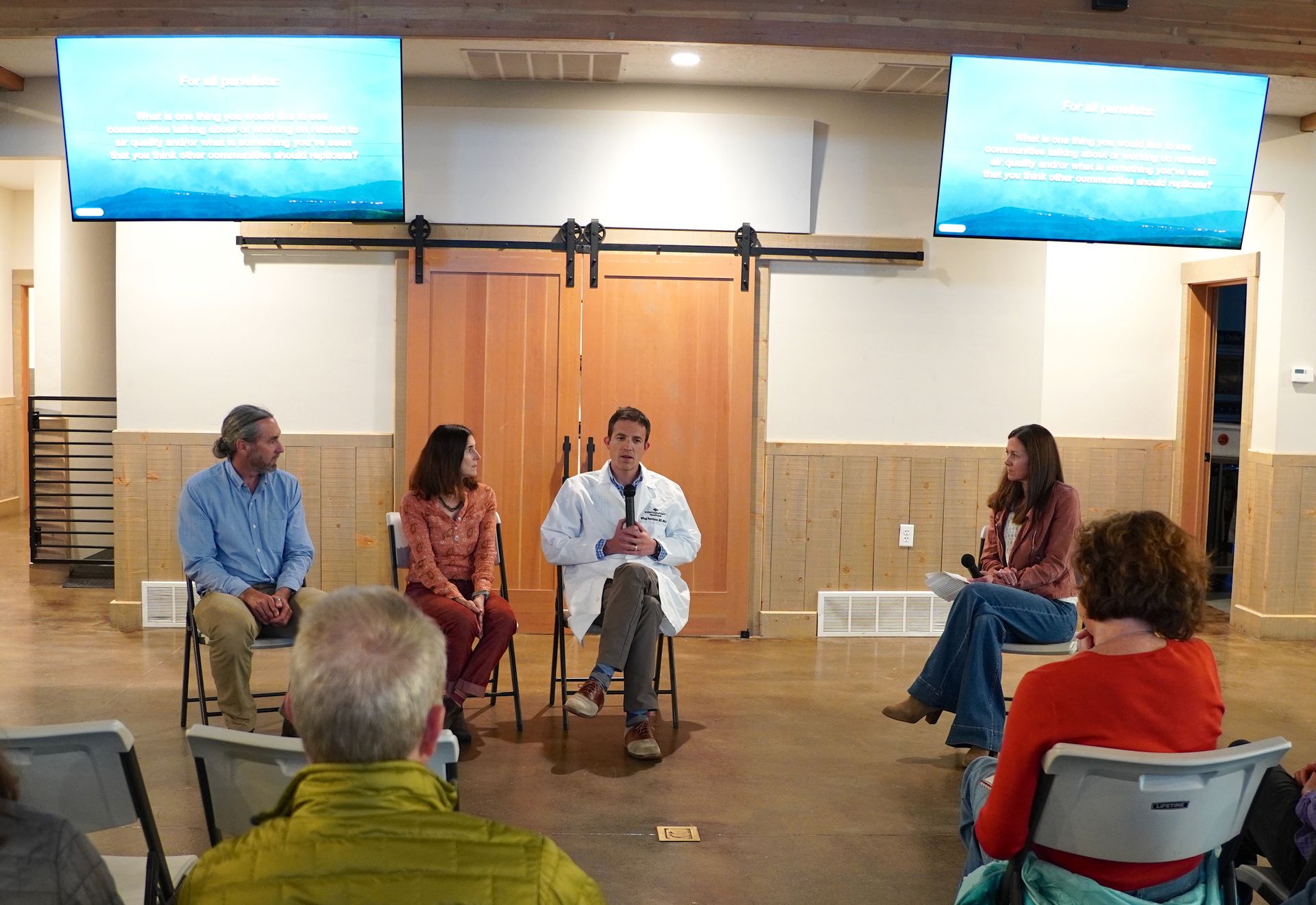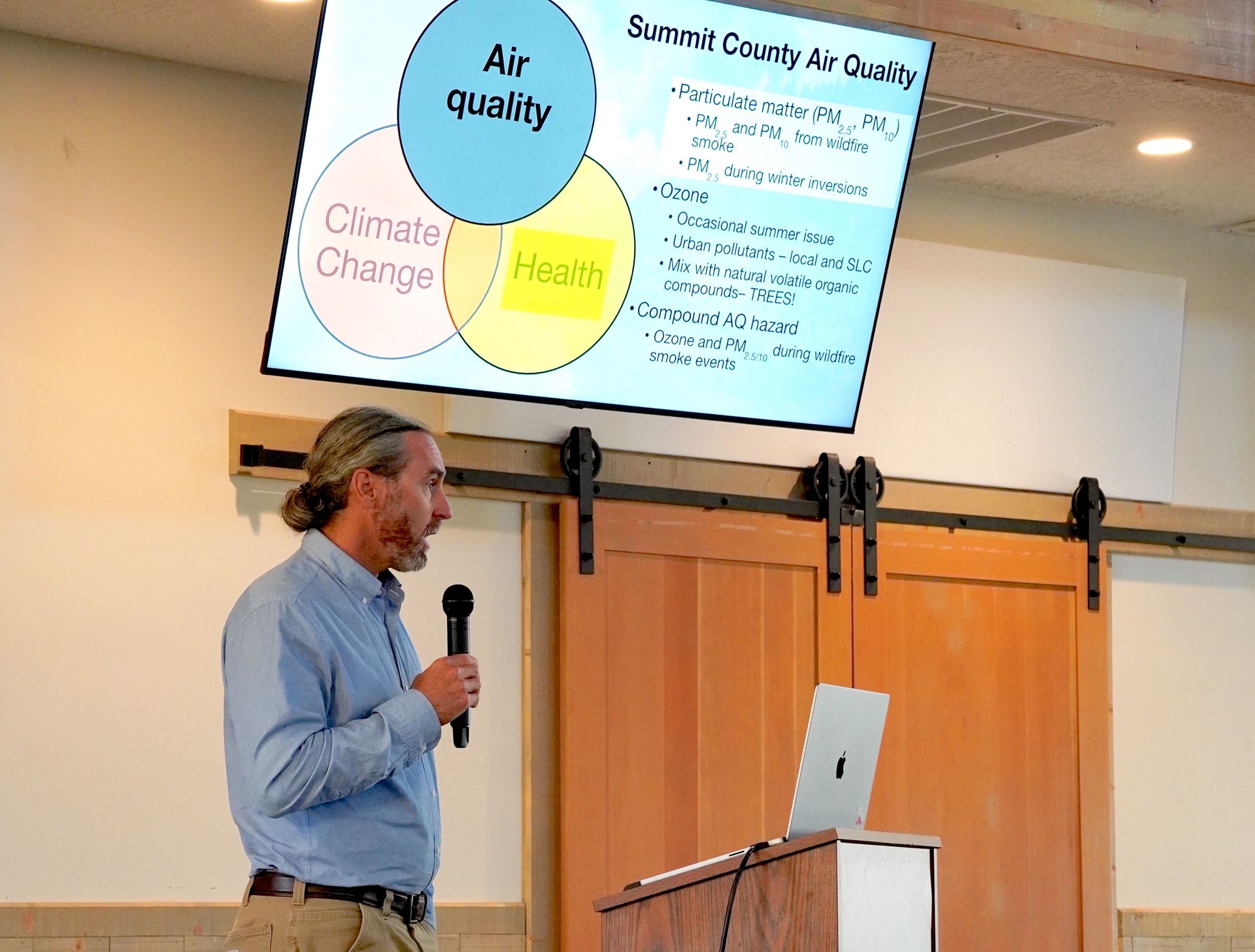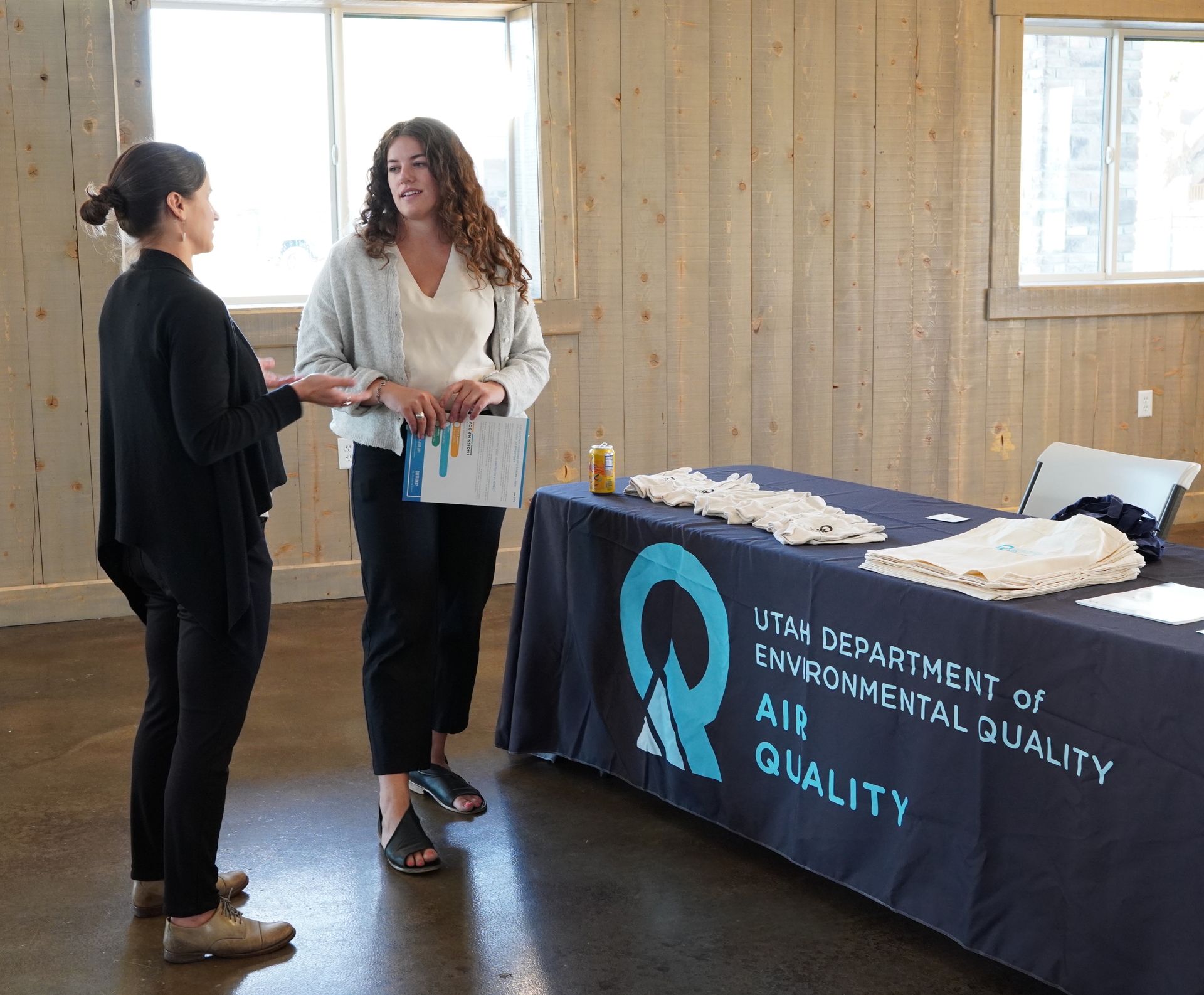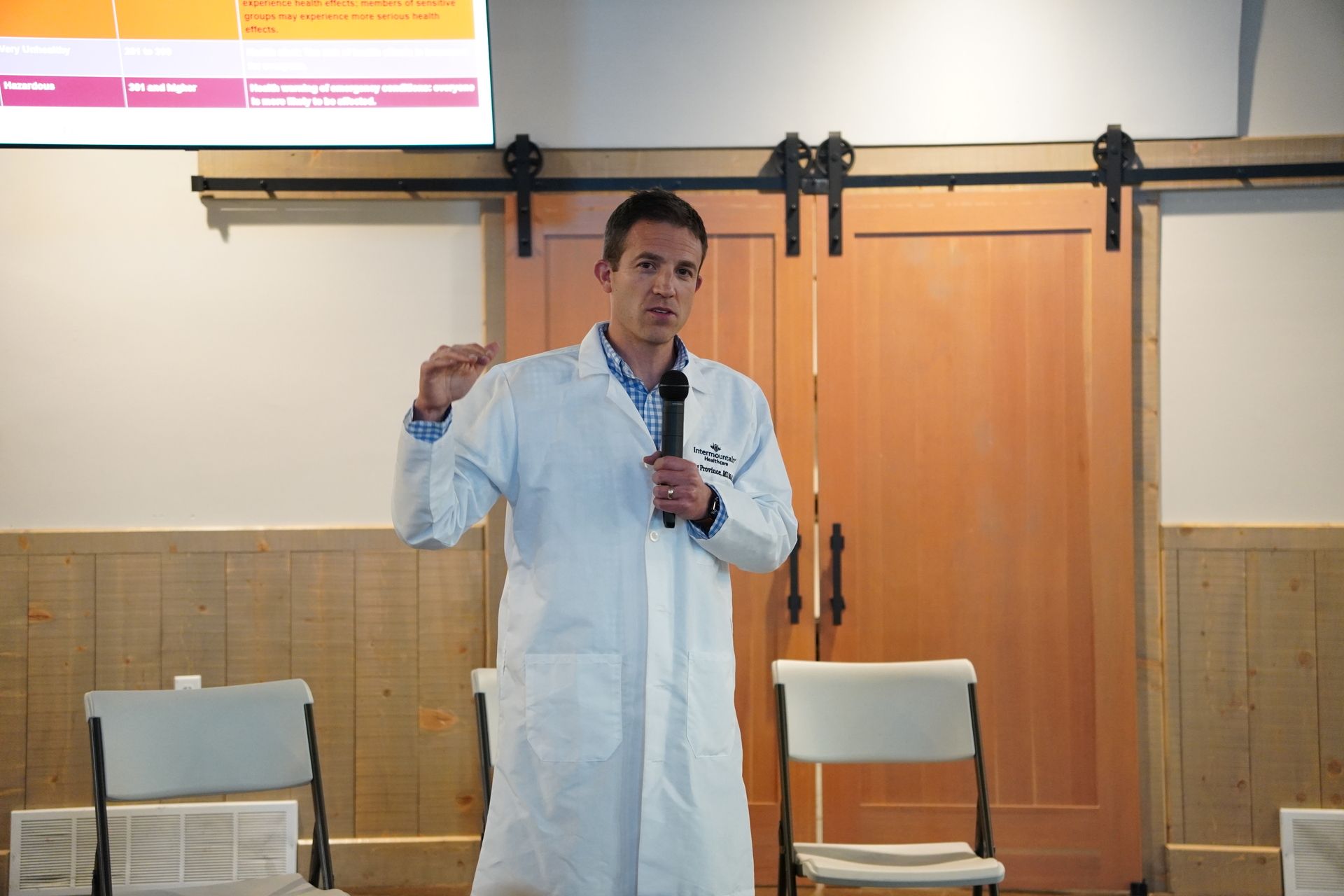- Summit County Health News
- Posts
- Event Recap: The Air We Share
Event Recap: The Air We Share
Read on for resources, links and a recording of the event!
Thanks for attending The Air We Share: Changes in local air quality + how it impacts health on September 30th. We are sending this email to everyone who attended and to those who were not able to make it out for the event.
In this email you’ll find the following:
Links to the event recording and slide deck
A recap of the event
Resources mentioned by our speakers and from the organizations that tabled at the event
But first, before you scroll on, we want to thank our incredible speakers: Seth Arens, Kerry Kelly, and Dr. Wing Province as well as our Board of Health member and event moderator, Alissa Van Wie. This was an incredible opportunity to learn from these experts in our community!
Sincerely,
Summit County Health

Slides & Recording
You can access a recording of the event and view the slides:
Click here to view the event recording
Click here to view the slides
Event Recap
At The Air We Share: Changes in local air quality + how it impacts health, we learned how air quality and health intersect with a changing climate, creating concerns for our community members when they are exposed to poor air outside and inside. We dove into understanding particulate matter levels (both PM2.5 and PM10) in Summit County, as well as ozone, and how these pollutants interact with the body. Our speakers mentioned several data points and resources for keeping an eye on air quality and taking action to protect yourself:
The Utah Division of Air Quality tracks both PM2.5 and ozone levels across several counties in the state. Looking for local air quality? Currently, the closest state monitors are in Wasatch County and there will be one installed in Summit County soon.
There are two Utah-based air quality monitoring companies with online maps to look at air quality: Tellus and PurpleAir.
The University of Utah also hosts information on current air quality at AQandU.org.
People with asthma and COPD may find their symptoms get worse during poor air quality events. Checking current air quality before doing outdoor activity is recommended. Long-term exposure to poor air quality is associated with other respiratory diseases and some cancers.
Wondering if you should modify your activity based on the air quality? The Air Quality Index (AQI) provides general guidance. Those with preexisting health conditions will want to take extra caution and should consider asking their doctor for more detailed advice.
Remember: indoor air quality is often the same as outdoor air quality. Consider building a DIY box fan filter or investing in a portable air cleaner. If your HVAC system can support it, install MERV 13 filters to trap small particles.
Most face masks will not filter out particulate matter, but a properly fitted N95 or P100 mask can be used to help.
Both audience members and our speakers mentioned the risk posed by radon levels in our homes. (Radon is an odorless, colorless gas that can cause long term respiratory health problems). It is highly recommended that you test your home for radon. The Health Department’s Environmental Health team has low-cost radon testing kits available at all three locations and posts a map online showing testing results throughout the community.
There is an entire state division focused on air quality—the Utah Division of Air Quality (DAQ), part of the Department of Environmental Quality. DAQ works across policy, research, community engagement, and more. Visit their website to learn about air quality incentives and the state’s Beehive Emission Reduction Plan.

Speaker and panelist Seth Arens presenting on air quality in Summit County.
There is exciting research emerging and dedicated researchers translating the science of air quality into action and policy for decision makers at the local, state and national levels.
As acknowledged by our speakers, the issue of air quality feels big. Beyond using the tips above to protect your health, it was recommended that we engage with our legislators to express concerns and promote solutions surrounding air quality. Don’t forget to tap into resources from organizations like the Utah Clean Air Partnership (UCAIR) and HEAL Utah to learn more about what you can do for air quality.

Thanks to all our partners for providing opportunities for our community to connect!
Taking action to protect air quality isn’t just for us as individuals—it is for everyone.

Dr. Wing Province, Chief Medical Officer at Intermountain Hospital Park City, presenting to the audience on Sept. 30.
Additional Resources
Do you have a story to share about a personal experience related to health and the environment? The Utah Health and Environment Action and Resilience Team (UHEART) is creating an online hub of stories, resources and data that connect our health to air, water and temperature changes in Utah. To send UHEART story ideas (just a sentence or two), share them with UHEART here or contact Lulu Blau at [email protected]. UHEART will contact you for further information.
The Utah Department of Health & Human Services (DHHS) hosts a plethora of great resources on their website, such as understanding how air quality impacts the respiratory and circulatory systems and how to choose a portable air cleaner.
During the event, Seth answered an audience question regarding geoengineering and cloud seeding. However, there were additional questions on this topic that we did not have time to get to during the event. We sent the list of questions to the Utah Department of Environmental Quality to gather some info to share. You can see the info they shared here.
Looking for ideas to promote clean air in the workplace? The American Lung Association has a list of resources.
HEAL Utah recently hosted an event titled Inhale: Transportation and Utah’s Four Air Quality Seasons. A recording of their presentation is available on YouTube.